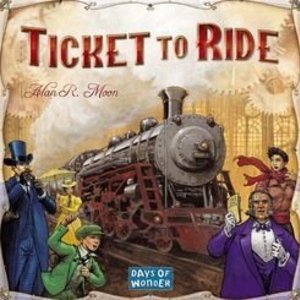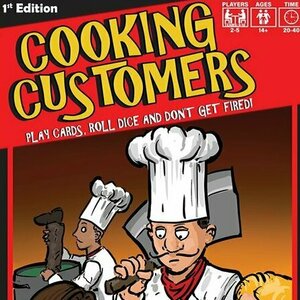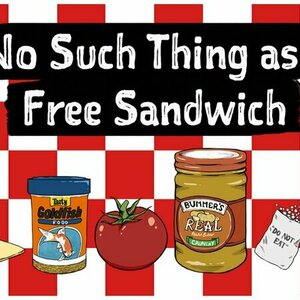
Etihad Mobile Pro
Business
App
With Etihad MobilePro, Bank al Etihad customers can stay connected at all times to their accounts...
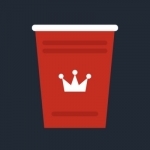
The King's Cup (Drinking Game)
Entertainment and Games
App
The classic party game The King's Cup transformed into app form! Never played before? It couldn't...
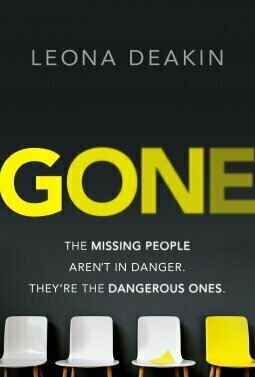
Gone / Mind Games
Book
Four strangers are missing. Left at their last-known locations are birthday cards that read: YOUR...
Purple Phoenix Games (2266 KP) rated Port Royal in Tabletop Games
Jun 12, 2019
Port Royal is the central hub for trading and commerce in the kingdom. Ships from distant countries come in to trade, and crew-members-for-hire wander the docks looking for work. Do you have what it takes to make a name for yourself in this bustling port? Put your bargaining skills to the test to find out!
DISCLAIMER: There are several expansions to this game, but we are not reviewing them at this time. Should we review them in the future we will either update this review or post a link to the new material here. -T
Port Royal is a card drafting game of press-your-luck in which players are trying to amass 12 or more Influence Points. Each turn is played in two phases: the Discovery Phase and the Trade and Hire Phase. During the Discovery Phase, the active player draws cards one at a time to create the Harbor for that turn. The cards revealed will either be Characters, Ships, Missions, or Tax cards. The active player can draw as many or as few cards as they would like, with one catch – if you reveal a ship with a flag matching one already in the Harbor, the turn is a bust and all cards are discarded! Think wisely before trying to push your luck when creating the Harbor! If you’re too risky, you could bust, but if you play it too safe, you won’t have many card choices for the next phase. During the Trade and Hire Phase, players interact with cards in the harbor. The number of cards players can take depends on the number of different ships in the Harbor. Players can hire characters by paying their hiring cost in gold, can discard ship cards and collect gold for performing a “trade,” or can complete Mission cards if they have the required symbols on their hired cards. The Discovery Phase is performed by the active player alone, but the Trade and Hire Phase can be performed by each player, in order, after the active player. If you decide to act on another player’s turn, you must pay them one gold coin. The game ends at the end of a round in which one player has amassed 12 or more Influence Points, collected from Character and Mission cards. The player with the most points wins!
One thing that I really like about Port Royal is that it’s a competitive game, but not a confrontational game. Besides paying to act on another player’s turn, there’s not a lot of player interaction, and as someone who can get pretty competitive, I really appreciate that. Yes, we are competing against each other, but with so little interaction, I’m more focused on my own strategy and cards than I am in trying to sabotage my fellow players. Another thing I like about Port Royal is the push-your-luck aspect of the Discovery Phase. I like it more than other push-your-luck games because all decisions are made by the active player – you’re not having to bluff or directly compete with another player when drawing your Harbor cards. It’s still a game of chicken, but against yourself. There’s still the element of push-your-luck, but it feels a little more safe than nerve-wracking.
All that being said, what I don’t like about Port Royal is the actual gameplay. Since there’s so little player interaction and the entire Discovery Phase is performed by one player alone, it feels like there’s a bit of downtime. Unless you’re the active player, you only get to act during half of every turn, so time is spent just sitting and watching other players. It ultimately all comes down to how quickly everyone performs their turns, but there’s just not a ton of engagement in my opinion. Don’t get me wrong – it’s a neat game. It just feels a little boring to play sometimes. It also takes some time to build up momentum to successfully execute a strategy. Everyone starts with 3 gold coins, but most cards cost more, and depending on when you get to act in the Trade and Hire Phase, any cards you could have afforded may already have been taken. So it might take several rounds before you’re able to really begin implementing a solid strategy, with the first few rounds just being a card-grab.
For the most part, I enjoy playing Port Royal. It’s mildly strategic, but the lack of interaction can make it feel a little stale sometimes. It’s not a game I pull out every single game night, but it’s one that I would most likely play if someone suggested it. Purple Phoenix Games gives Port Royal a buccaneer’s 7 / 12.
https://purplephoenixgames.wordpress.com/2019/04/16/port-royal-review/
Purple Phoenix Games (2266 KP) rated Ticket to Ride in Tabletop Games
Jan 9, 2020
Ticket to Ride is one of those games that has really hit it big in the mass market. You can find it all over in big box stores, in FLGS, online, secondary market, just everywhere. But why? And for this long? Ticket to Ride (TTR) came out in 2004. A mere 15 years ago. While that doesn’t really sound like a long time, in contrast to today’s game industry it is an eternity. With thousands upon thousands of games being released into the market through direct publish, Kickstarter/crowd funding, and big releases at conventions it’s hard to believe that you can still find this hanging with the exciting, fresh new games.
What I truly believe is magical about this game is its simplicity. “You have two main options: take some cards or play some cards.” When you can start a teach of a game by saying that, your players are invested right away because they know you aren’t going to bog them down with rules upon rules. “If you decide to take cards you can take these colored train cards or you can take new route ticket cards.” So now players have two choices from gaining cards. “If you decide to play cards you need to play cards of a color and number matching whichever route between two connecting cities on the map you like.” Done. The game is explained. Yeah, you can fight me about the endgame scoring stuff like longest route and whatnot, but for new gamers, you have explained this classic in three sentences. It’s so beautiful when a game allows you to teach it so quickly.
But that surely means that this is an easy game, right? With so few rules and such. Well, no. It’s not really “easy” at all. While your main rules are light, the strategy and tactics during play can cause feelings of joy and delight as well as frustration and concern as you see someone claim the route you need to connect to two cities on the map. Of course, you can’t explain that to your new players right away. You want them to experience these feelings organically and fully. It’s what makes TTR a really great game: having your well-laid plans just shot to smithereens by the guy who can’t tell the difference between the white train cars and the wild rainbow train cars.
DISCLAIMER: I play with the 1910 expansion, which is a MUST. The larger cards are way easier to play with. See photo below with comparisons from base game on bottom with the larger 1910 cards above. YMMV, but I will always play using this expansion. -T
Components. Let’s compare components to some current or newer games. The game board is laid out really well, and the artwork is sparse and not over-busy on the board. This is a HUGE plus for me. I like nothing more than for the board to offer thematic elements and feeling without pelting my eyes with too much distraction. The cards were a bad choice. Not because the art or the quality on them is bad – because that’s not what I am saying. The size of the cards was a poor choice. I did purchase the 1910 expansion and simply will not play my copy without it. I recently played TTR for GenCan’t 2019 at my FLGS with OG base cards and found myself dreaming of the 1910 cards. The score tracker discs are of industry-standard quality for scoring discs. The plastic train car pieces are still just as wonderful to handle and play with as are many other more modern components. Seriously just as good. TTR components (and really, most of the time Days of Wonder components in general) are really great.
So do I still enjoy playing it? You betcha, don’tcha know. I still love seeing the board in front of me, agonizing over the route tickets I am dealt, and trying to decide if I should go for the New York to Los Angeles, or keep it simple with multiple routes along the Mississippi River. I still love the panic that ensues when I see people hoarding train cards, just knowing that they will soon be on the attack and their train car collection will dwindle to almost endgame levels in too few rounds for me to complete my masterpiece. I guess I still really love it.
Is Ticket to Ride my favorite game? No. But I’ll tell you what. I hadn’t played it in a couple years, and after this weekend’s play, it has moved up on my list by several spaces. It still holds a special place in my heart, and also the hearts of my team. That’s why Purple Phoenix Games gives Ticket to Ride a retrospective 20 / 24. It’s still great!
Purple Phoenix Games (2266 KP) rated Cooking Customers in Tabletop Games
Feb 4, 2020
DISCLAIMER: We were provided a copy of this game for the purposes of this review. This is a retail copy of the game, so what you see in these photos is exactly what would be received in your box. I do not intend to cover every single rule included in the rulebook, but will describe the overall game flow and major rule set so that our readers may get a sense of how the game plays. For more in depth rules, you may purchase a copy online or from your FLGS. -T
Cooking Customers is a card and dice game where the first player to amass $20 in “tips” will be crowned the winner. Players earn tips by serving enough meals to customers at each table. Players can receive meals by rolling them on dice, or by card manipulation. Let me explain.
To setup, place the meals (black discs) in the middle of the table for all to reach. Similarly, place all the dice nearby. These dice have three sides: FIRED, MEAL, and a blank side. Shuffle the mighty deck of cards and deal five to each player, placing the rest of the deck in the middle of the table. Finally, shuffle the Table cards and place somewhere near the other components. Players are now ready to begin!
On a player’s turn, they will first draw the topmost Table card to be placed in front of themselves. This card will show how many meals need to be served to it to be satisfied and earn tips. The Table cards will mostly just sit there in front of players collecting meal discs for the game’s duration. Once a Table card is drawn (and only one Table per player, please) the active player may then play cards from hand. A player may play one or two cards, but only one card may be played to the active player’s tableau, and only one card may be played on an opponent. Should a player not wish to play a card to anyone’s tableau, they must discard a card to the middle of the table. Then the active player will draw back to the hand size of five cards.
Cards played to other players are usually bad, Munchkin-esque cards that halt progression or just cause mayhem for their designs. I will not go into detail on these, as half the fun of this game is the Take-That of these cards. Cards played to a player’s own tableau can be a myriad choices: Cooks, Helpers, Kitchen Supplies, etc. The most important are the Cook cards. A player will need to have a Cook “hired” in front of them in order to participate in the next phase of the game: rolling dice. Players can have Helper cards (sous chefs) and Kitchen Supplies active without a Cook, but the player may not roll dice or serve meals without a Cook. Cooks and Helpers will dictate how many dice are rolled in the next phase of a turn, and rolling more dice is always better.
Once all cards have been played on a player’s turn, they may now roll the dice (though for a game with such a dark theme I say we use the “Roll Them Bones” colloquialism). When the dice are rolled, players are hoping for MEAL to show up on all dice. This is how a meal can be collected and served to the Table cards. However, if at any time all dice read FIRED then the player’s Cook is fired and they may not continue rolling dice. The Cook is discarded and play is forfeited to the next player. #cheflife amirite?
Once a Table card has all the meals it needs to be satisfied, the player may score it by flipping it over to reveal the amount in tips they have earned. Play continues in this fashion until one player has earned $20 in tips. They can then taunt the other players with their superiority.
Components. Cooking Customers is a BUNCH of cards, some painted wooden discs, and some embossed dice. The cards are good quality, the discs are good as well, and the dice are great. All the components are pretty darn good. The art, though gross at times, is really well-done (see what I did there) and kept us laughing throughout our plays.
I do have one qualm about this game: the rulebook. Though only six pages long and with lots of illustrations throughout, I found that reading it made me more confused than it should have. I did take the rulebook’s advice to go to the publisher’s website, goodenoughgames.com, and watch the rules explanation and playthrough. That helped immensely to clear up what the rulebook did to my brain.
All in all, we had a great time playing this one. We all like Munchkin, and though it is NOT Munchkin, Cooking Customers delivers a take-that dice and card game that really is worth checking out. If you are looking for something with a new theme that plays quickly and has some meat on its bones (and there), then we certainly recommend Cooking Customers. Purple Phoenix Games gives this one a hearty (food puns are too easy) 13 / 18. You can purchase a copy at goodenoughgames.com currently. While you’re there please watch the video.
Purple Phoenix Games (2266 KP) rated No Such Thing as a Free Sandwich in Tabletop Games
Sep 15, 2021
Disclaimer: We were provided with a prototype copy of this game for the purposes of this preview. What you see are not finalized components or artwork, and they will change in final production. -L
No Such Thing as a Free Sandwich is a party game in which players are attempting to make the best (or worst) sandwich according to the parameters set by the current Challenge card in play. To setup for a game, shuffle the Challenge and Ingredient decks separately. Decide which side of the Challenge deck you will use – one side is black, and the reverse is white. Each side provides a different set of Challenges with which to play, and just adds some variability to the gameplay. Deal 3 Ingredient cards to each player, reveal the first Challenge card, and the game is ready to begin!
Once a Challenge card is revealed, players will look at their hand of Ingredients and place their selected Ingredients face-down in their tableau. Each Ingredient card has stats attributed to 5 different Categories: Presentation, Taste, Nutrition, Affordability, and Wow Factor. These stats, including both negative and positive numbers, are what will determine your score for the Challenge. (For example, lowest Nutrition score, greatest sum of all categories, etc.) All players must play at least 1 card each round, but can play all 3 of the cards in their hand if they so choose. Certain Ingredient cards offer special effects when played, and those powers can boost your own score, allow you to draw more Ingredients, or even pawn off an Ingredient to an opponent. Plan wisely and see what your random Ingredients can offer you each Challenge!
When all Ingredients have been selected, players simultaneously reveal their cards and tally up points. The player with the best score (best Sandwich) according to the Challenge is the winner, and takes that Challenge card for themselves. The winning player may choose to take 1 of the Ingredient cards in play into their hand, and all other Ingredient cards (regardless of if they were played or not) are re-shuffled into one deck again. The next Challenge card is revealed, all players are dealt 3 new Ingredient cards, and the next round officially begins. Players will only ever have 3 cards in their hand each round, with the previous round-winner potentially having 4 cards. The game continues in this fashion, revealing a Challenge card, playing/revealing Ingredients, and determining a round winner, until all of the Challenge cards have been played and awarded. Players then count up the Challenge cards they have won over the course of the game, and the player with the most Challenge cards is named the winner!
For being a game with a silly premise, it’s actually more engaging that you might initially think. The inclusion of 5 different categories for Ingredients is what elevates this gameplay from silly humor to actual strategy. I’m not saying this is the heaviest brain burner game you’ll ever play, but for being a light party game, you really have options each round to consider. What is the best combination of your Ingredients to meet the Challenge? Do any of your Ingredients have special effects that could enhance your round? What if you just have a bad hand and none of your Ingredients are optimal for this Challenge? You’ve just got to figure it out!
And the fact that cards are selected in secret and revealed simultaneously adds another layer as well. You can’t pick which cards to play based on what you saw an opponent play. You really have to go for the win each round since you don’t know what anybody else has in hand. The make-up of the Ingredient deck is mostly unique as well, with only a few duplicates of cards. You never really know what anyone has in hand at any point, so there’s no benefit to play it safe.
To touch on components for a minute – I mentioned that this is a prototype copy of the game, which will most likely be different in final production. That being said, this prototype is pretty good quality already. The tin that houses the game is nice and sturdy, and the cards themselves feel nice in hand and are a good size. The artwork is not yet finalized, but is mostly fine and thematic – just simple pictures of each Ingredient on the card. No real complaints on the quality of this prototype from me.
If you’re looking for a funny and fast party game, definitely consider checking out No Such Thing as a Free Sandwich on Kickstarter. The gameplay is easy and fast to learn and play, and it will keep players engaged and laughing throughout the rounds. Another plus? This game has a tiiiiiiny footprint so you can basically play it anywhere! Throw the tin in your pocket and you’ve got a game for anytime. If you want a game with a silly premise, light strategy, and a bit of math, then this might be the game for you. All in all, fun game and gameplay from AvianRampage Productions, and I look forward to following this campaign!
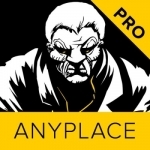
Anyplace Mafia party app. Mafia / Werewolf games P
Games
App
Anyplace Mafia PRO will completely substitute a set of cards for playing Mafia card game (party...

TicketCard by Edenred
Food & Drink
App
TicketCard by Edenred je chytrá mobilní aplikace společnosti Edenred CZ s.r.o. pro držitele...

